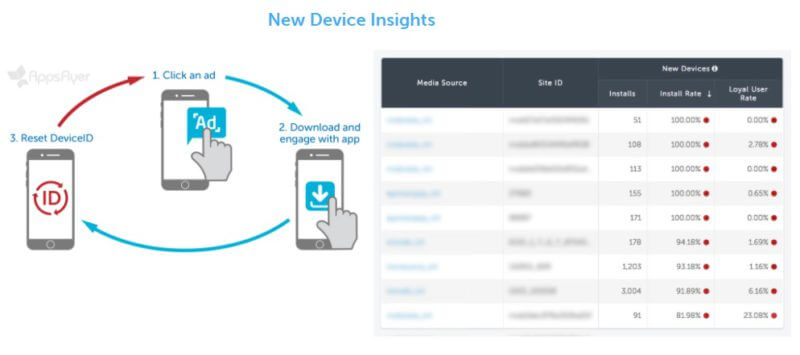AppsFlyer launches mobile anti-fraud initiative, updates its fraud detection services
The new initiative is designed to weed out app ad or installation fraud in any of the company’s 2,500 partnering ad networks.

Mobile attribution and analytics service AppsFlyer has announced a new initiative to help clean up the mobile ecosystem, as well as unveiled the latest version of its fraud detection.
The initiative, co-founder and CEO Oren Kaniel told me, is a formal announcement of an effort the Tel Aviv-based company began about two years ago. Kaniel said his company is on the lookout for signs of fraud in or through the 2,500+ mobile ad networks that are part of its ecosystem, which he said represents virtually all mobile ad networks.
AppsFlyer contends its tech is found on 98 percent of the world’s smartphones, and that it holds 65 percent of the mobile attribution market. In a statement accompanying the announcement, Kaniel said:
Thanks to AppsFlyer’s scale, we are in a unique position to detect and prevent mobile fraud faster and more consistently over time than anyone else in the industry. Further, since actions speak louder than words, we are going to regulate the AppsFlyer ecosystem and will remove bad actors from our platform in order to protect our clients — the marketers. As such, we have begun a continuous review and audit of all our integrated ad networks, ensuring they are aggressively doing everything in their power to minimize fraudulent traffic being sent to AppsFlyer clients.
Kaniel told me that two unnamed networks were dropped from AppsFlyer’s ecosystem because of fraud issues, although AppsFlyer intends to mostly work with problematic partners to solve the problem.
The company has also announced version 2.0 of its Active Fraud Insights, which focuses on AppsFlyer’s concentration — app installs and ads for app installs.

Originally introduced last year, Active Fraud Insights now offers several new capabilities. These include the ability for marketers to quickly identify fraudsters by media source (see image above), an easier detection of concentrations of “new devices” that might be fake, and detection of two new types of fraud — “click flooding,” which fakes a click on an app install ad, and install hijacking, where your app installation is falsely attributed to a fake ad.
Marketing Land – Internet Marketing News, Strategies & Tips
(52)














